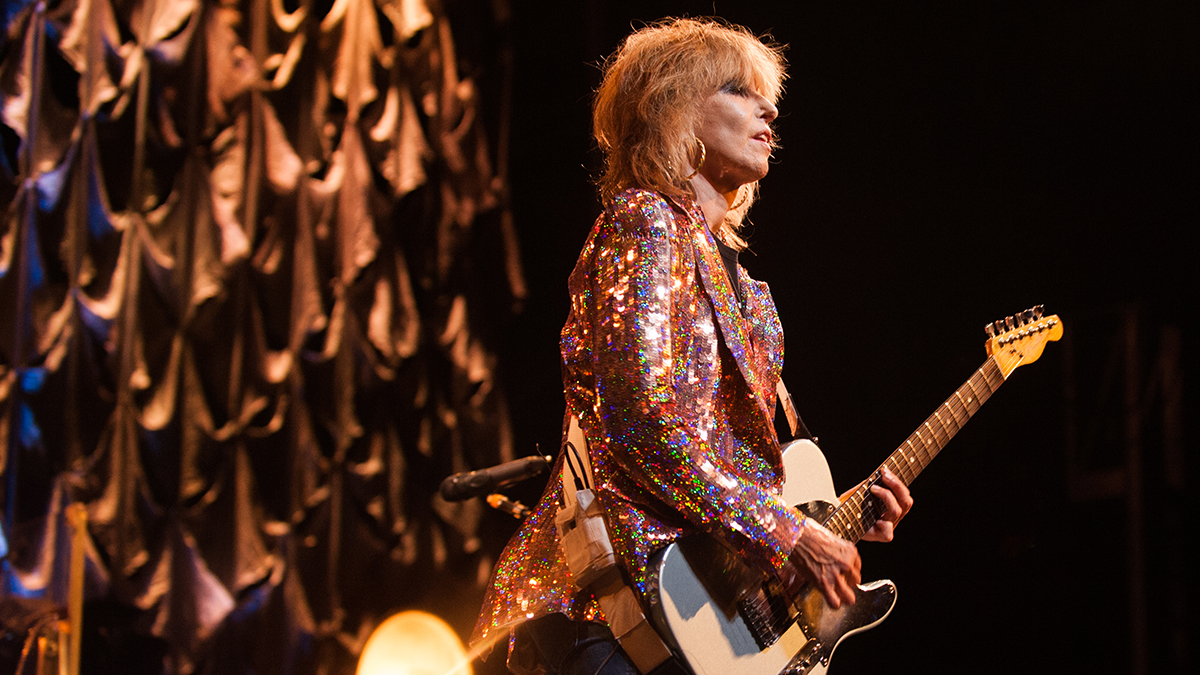“I played a 5-string with Lauryn Hill, but it didn’t feel like a real bass”: Raised on R&B, schooled by fusion, and empowered by punk rock, Bad Brains bassist Darryl Jenifer remains a 4-string purist
The bass powerhouse behind Washington DC’s Bad Brains pioneered a style that changed the history of punk
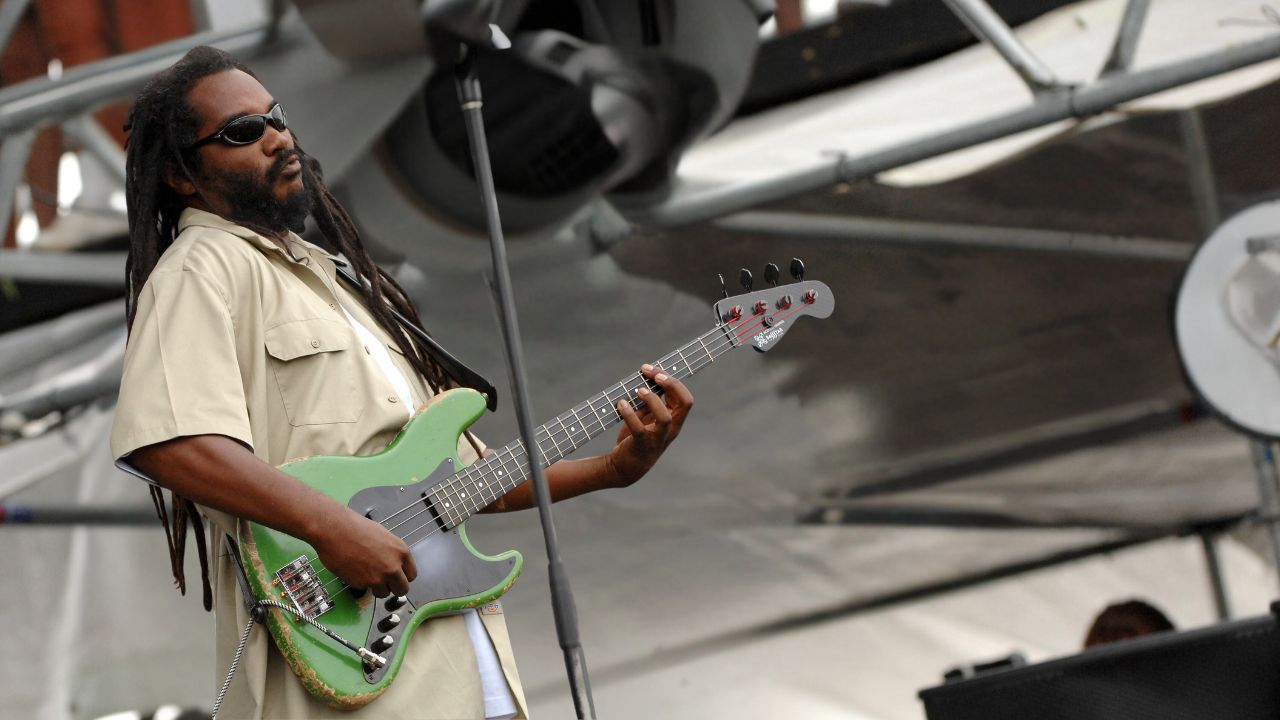
As a member of Bad Brains and one of the co-creators of a daringly original brew of reggae, punk, soul, and fusion, bassist Darryl Jenifer has inspired musicians on every point around the color wheel.
As a devoted member of the Stanley Clarke fan club, Jenifer’s own musical journey began in the early '70s following an invitation to join jazz-fusion group Mind Power with Earl Hudson, Hudson's brother HR, and Gary ‘Dr. Know’ Miller.
The band had dreams of becoming the next Return To Forever, but when friend Sid McCray introduced Mind Power to punk rock, Jenifer dove in headfirst and renamed the band after the Ramones song Bad Brain.
Few could have predicted what came next. Jenifer married his love of complex fusion with a knack for aggressive English punk, perfecting a scorching style that blended Clarke-inspired double stops, riffs that recalled Black Sabbath, and a precise intensity that was several notches above his contemporaries.
A chance encounter with Bob Marley in 1978 turned the Brains on to reggae, and their first two albums – their 1982 self-titled debut and 1983's Rock for Light – are certified punk-and-reggae classics that kick-started the American hardcore scene and inspired genre-straddling heavyweights such as Fishbone, the Red Hot Chili Peppers, Sublime, the Beastie Boys, Nirvana, Living Colour, and No Doubt.
I Against I (1986) and Quickness (1989) turned up the hard rock and metal quotients, and when the Hudson brothers occasionally left to pursue other projects, Jenifer and Dr. Know maintained the brand.
The late Beastie Boys bassist Adam ‘MCA’ Yauch produced 2007s Build a Nation, the Brains' eighth studio release and their first album of original material in 12 years. By 2010, Jenifer had landed a gig with Lauryn Hill and released a solo album, In Search of Black Judas, that showcased his plentiful production chops.
All the latest guitar news, interviews, lessons, reviews, deals and more, direct to your inbox!
“I'd been making riffs and beats for years,” Jenifer told Bass Player. “Finally, I told my label that I wanted to try making an album. It's like a mix tape, and I wanted to put it out there instead of me riding around listening to it in my car.”
It makes perfect sense, therefore, that Jenifer was in the producer's seat for the Brains' last studio album, Into the Future. Like most of their catalogue, it dips into hardcore, reggae, and hard rock, but Jenifer's production brings the band deeper into the 21st century while showcasing each player's strengths.
Jenifer's airtight mind-meld with Hudson on songs like Come Down is custom-built to invoke mosh-pit chaos, while his front-pickup bass tone occupies a perfect space underneath Dr. Know's thick guitars on rockers like Fun.
When Bad Brains hit the ground running, who were your rock bass influences?
“There weren't many, but I was way into John Paul Jones and Geezer Butler. That ‘doomsday riff’ in How Low Can a Punk Get, from our second album, was inspired by my love for Black Sabbath songs like Sweet Leaf and Iron Man. And I dug what Captain Sensible from the Damned did on Machine Gun Etiquette.
Back in the day, you were listening to fusion, too, right?
“I got really deep into Stanley Clarke – at a certain period of my life in the '70s, I was into dudes like Stanley, Percy Jones, and Jaco. When we started out as Mind Power, we were going to be a new Mahavishnu or a baby Return To Forever.”
How did the arrival of punk rock change your feelings about fusion?
“When punk rock came in, I realized I didn't have to know how to play in order to express myself on my instrument. That empowered me, because I could be creative in any way I wanted to. Punk rock taught me that I could be somebody in music without being a virtuoso.”
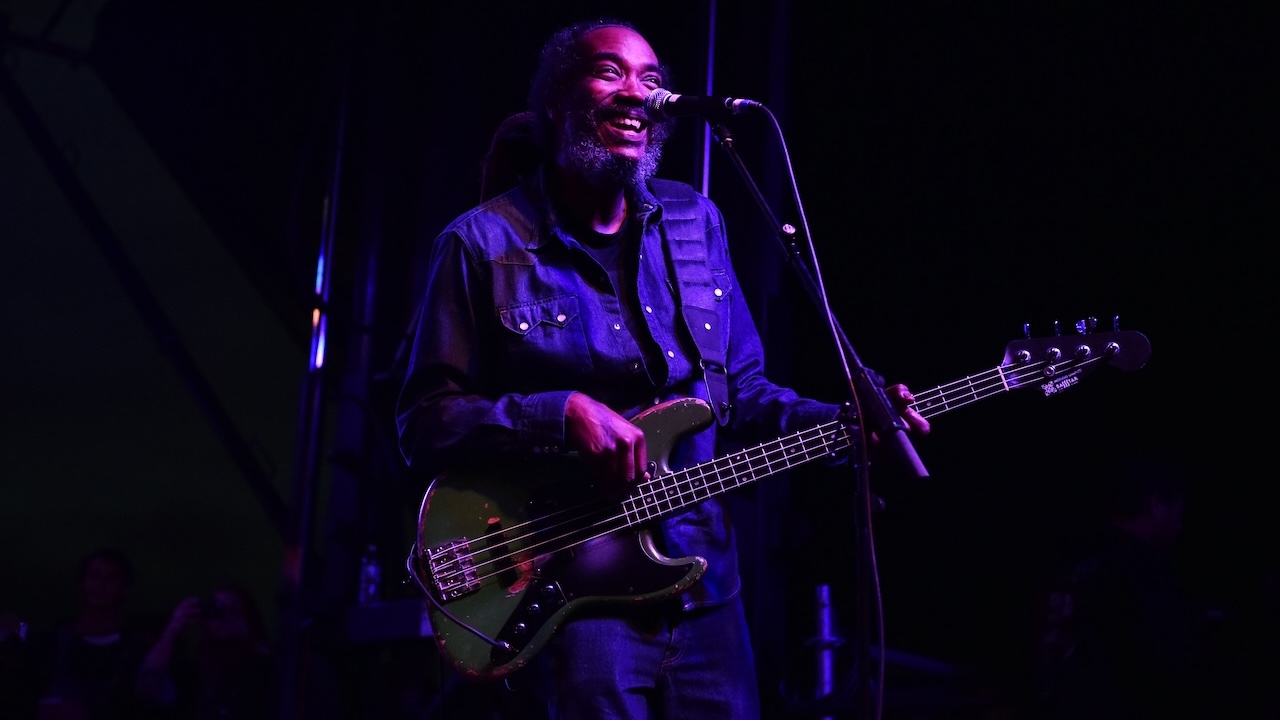
Did the band's love for fusion find its way into the music?
“Regulator is my punk-rock version of a line from Weather Report's Mr. Gone. Pay to Cum was inspired by a George Duke song. The intro to Don't Need It is us being punk, but still wanting to play our instruments well.
“When I look back now, we were naive and fearlessly creative. It wasn't contrived, either – we weren't sitting around somewhere thinking about mixing styles. We wanted to make our own brand.”
How did reggae and Rastafari become such a big part of Bad Brains?
“In 1978, I went to see Stanley Clarke at the Capital Center in DC, and after the show, I got his autograph on a dollar bill. Behind him, onstage, was this dude with big dreadlocks. I didn't even know who Bob Marley was, and to tell you the truth, I didn't know he was playing. I was there to see Stanley Clarke.
“When the Wailers began playing, I was complaining that Family Man Barrett's bass was too loud, but then I got absorbed into the music, and I started to feel the magic. That was the beginning of our journey into Rasta culture.”
When you got serious about reggae, how did you learn to play it with authenticity?
“I didn't just listen to the music or the bassline – I thought about the people playing it. I listened to Family Man and Flabba Holt and Lloyd Parks and learned the differences between reggae, rub-a-dub, sound system, and ska. If you want to play music that encompasses different styles, take time to learn the differences, and think about the players.”
What do you listen for when you’re learning a new style?
“It's all about texture and attack. Is the bass player using a two-finger walk or a one-finger claw? How many fingers are they using on the left hand? Are they playing the bassline on just one string?
“To get the right sound, pay attention to how many fingers you're using and which part of your fingers are touching the strings. At the same time, you can't lay down weight if your playing is too ‘studied.’ There's an unstudied type of locomotion to the rub-a-dub style, and there is a sort of nimbleness, too.”
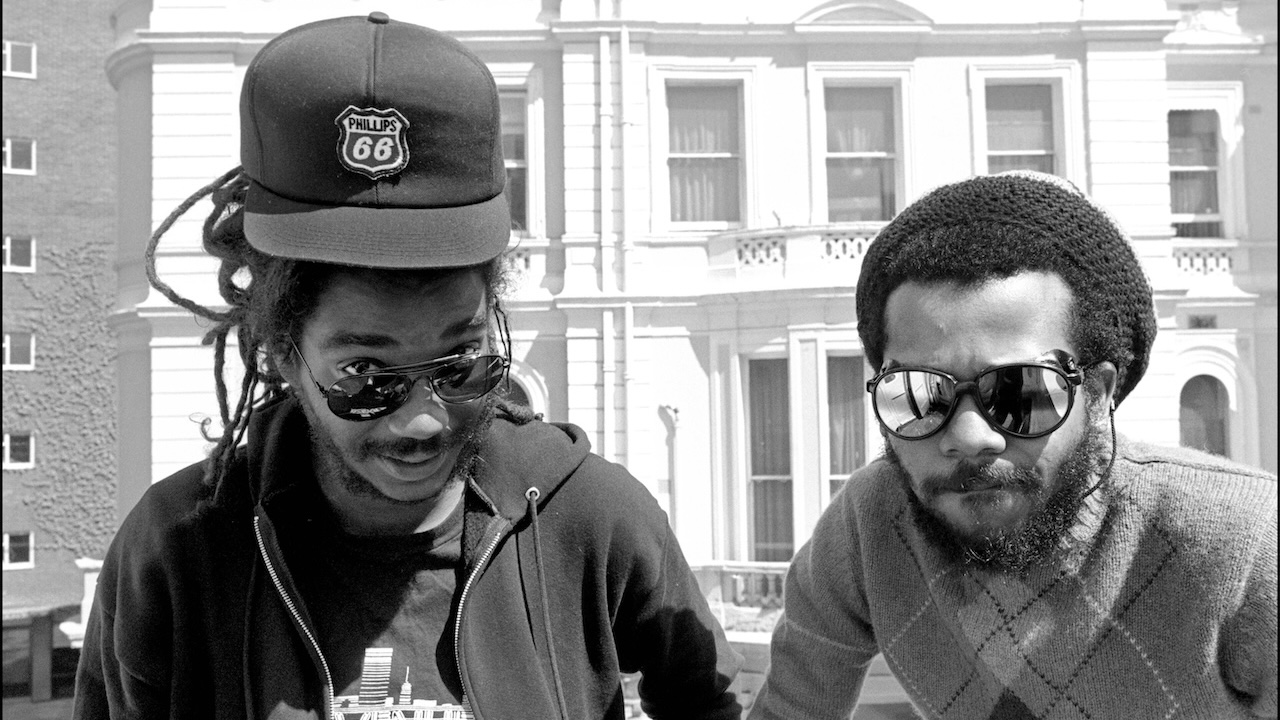
What's the advantage of nailing the little things?
“There's a difference between imitating stuff, like a wedding-band musician, and really playing something. I can play punk rock, I can play with Metallica, or with the Wailers and not be imitating anyone, because I have lived those styles.”
Do you care about those details in your own playing?
“Yes. Being heard over and under Dr. Know's wall of guitar, for example, has a lot to do with how I approach single notes, when I drop to the octave, when I hit those 1st-and-5th double-stops.
“I'm selective about when I flip it, pick it, and downstroke it. I try to be creative with textures and double-stops, which I learned mainly from listening to Stanley Clarke, like the way he did it on School Days.”
When did you settle on the perfect instrument and amp for Bad Brains?
“For the first couple years, most of the basses I played were borrowed from people in bands that opened for us, but I got my first real bass guitar, a Fender Jazz Bass, around 1980. I was never that much into equipment – give me a Jazz Bass, Rotosound strings, a cable, a .60mm Dunlop pick, and an Ampeg SVT, and I'm done. I never wanted any pedals between me and my amp, and I still don't. I believe in relying on my fingers and my bass to get the sounds I need.”
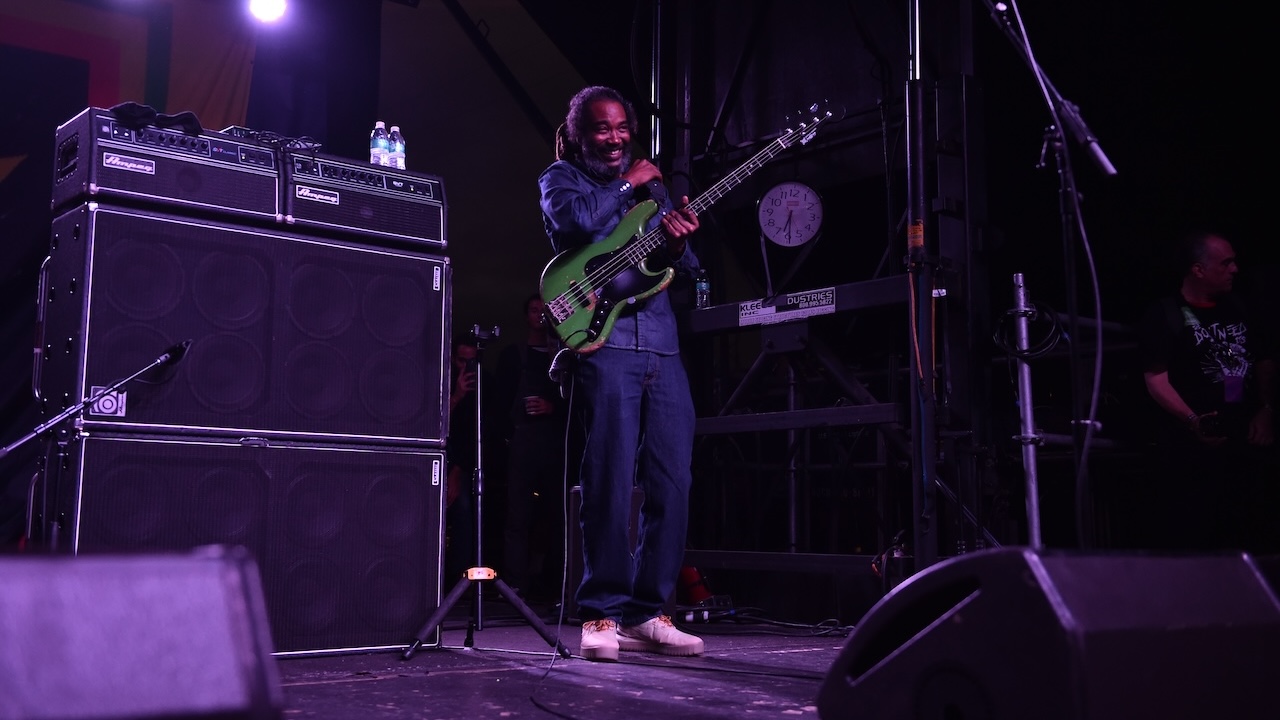
Seems like that green Modulus has been your main axe for years.
“I got it when we were on 48th Street in New York in 1980 or '81. I was pretty abusive to my basses, sort of a rebel youth thing, and I didn't want a bass that would be so sensitive to cold weather, with the neck warping and things like that.
“So when I saw the Modulus, with its carbon fiber neck, I figured it would be durable enough to survive the cold or whatever happened onstage. Every time I pick it up, it feels as new as the day I got it.”
How do you go back and forth between strong rock and deep dub tones?
“With the Modulus, I can get a sustained, solid sound when I play power chords with a pick, and then I can tuck the pick away, move up the fretboard, and thump on some rub-a-dub. This bass has a real resonance, a deep tone, to it.
“With Rotosounds, the Badass bridge, and EMG pickups, I plug into an SVT and have a nice foundation for rock stuff – but when I want rub-a-dub, all I have to do is roll off the high end, move up on the neck, and do the one-finger claw like Jamerson. My soundman, Andy Stackpole, helps, too. We've worked together for 20-something years, so he knows how and when I'm trying to fill the room.”
With Lauryn Hill, you covered the bottom end on a 5-string while Doug Wimbish added effects and upper-register soundscapes.
“I played a 5-string with Ms. Hill and I liked it, but it didn't feel like a real bass: I'm a 4-string purist. Doug is my man, and one of my inspirations.”
How did you produce the last Bad Brains album?
“I knew the styles we wanted to cover – some fast hardcore, a more involved sort of rock, and two or three types of reggae. We'd focus on a track, go home and back to our lives, and then come back and work some more. It's more organic than going in and writing, rehearsing, and trying to record everything in a week.”
There's footage of the recording sessions in the A Band in DC documentary.
“I'm not a supporter of that movie. There's some cool stuff in there, but how the hell are they going to begin and end a movie about Bad Brains with a band fight? HR and I have probably argued like that three times in our lives, but they took that vulnerable moment and sensationalized it.”
“I told the director, ‘Look, I know this isn't a promo video and I'm not trying to censor you in any way, but bookending the movie with all that negativity does not represent who we are.’ They stopped taking my calls.”
What advice would you give to a bass player who's just starting out?
“Go learn your Larry Graham. Go learn your James Jamerson. Jamerson will teach you how to play what's right for the song and how to accompany singers. He was one of the busiest bass players ever, but if you weren't listening for it, you couldn't tell, even under singers! Listen to the Carpenters to hear how they played great music without having to show off.
“Don't treat music like a hobby, or else it'll sound like it's a hobby. Make sure you have your vision and your passion. And stay inventive.”


